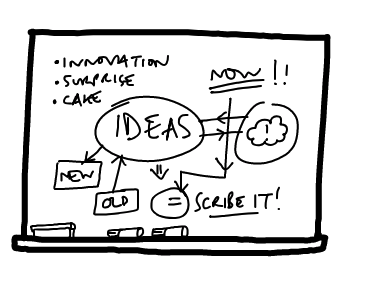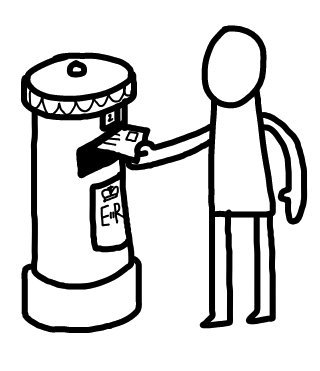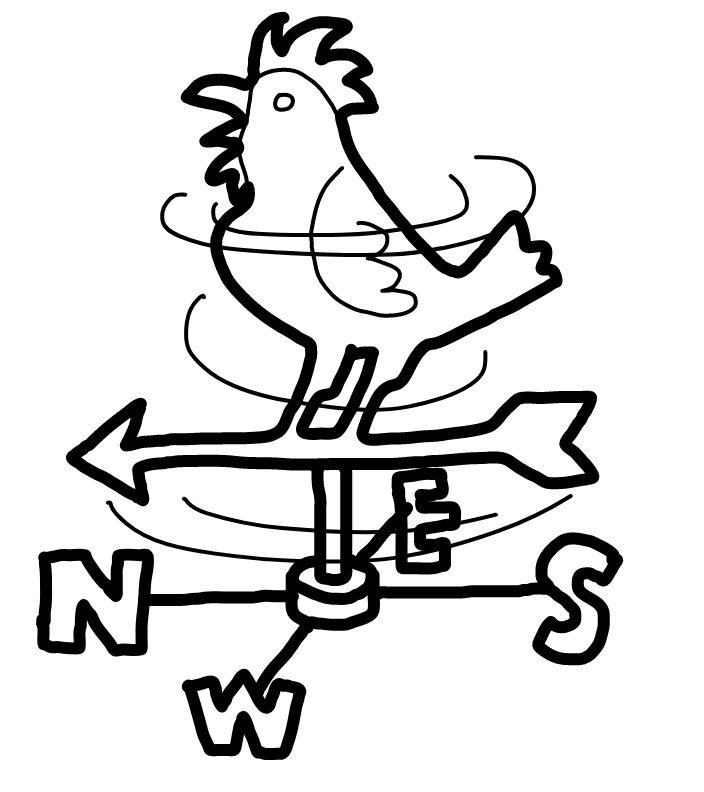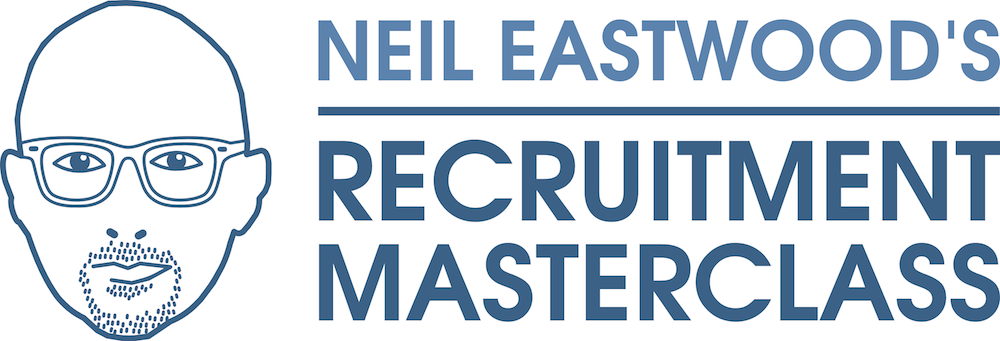Neil Eastwood’s Top Tips

Welcome to the small corner of the Internet housing my year long collection of Social Care Recruitment and Retention Tips. These 52 nuggets of wisdom were shared weekly throughout 2018 with my c.1500 Twitter followers and their connections as well as 10 Trolls and an upset Therapy Cat (spitting about Tip 9 mostly).
There is no email capture or hoop to jump through – they are yours to try out. Enjoy!
Oh, before you go – I love feedback so please do tweet me what is working to @StickyNeil and if you would like much more guidance on recruiting care staff, then check out my offer after Tip 52.
Best of luck with your recruitment work!


Tip #1/52
Measure how many new starters came from your Refer-a-Friend scheme. Is it less than 25%? Do you even have one? Providers globally rate staff referrals as number one. An Opportunity?

Tip #2/52
Why not tell families of those you provide care or support that you are on the lookout for great new staff members to join the team. In about 45% of cases a family member is less than 10 miles away. I have found they feel goodwill & are pleased to help & be asked.

Tip #3/52
Those who care for loved ones can make excellent paid care staff. They may have never considered the role unless approached. How about offering free spaces on your moving & handling course to local family carers to build goodwill & grow your network?

Tip #4/52
Let’s take a critical look at your online application form. You get huge drop-off if it’s more than a single page, so only ask what you REALLY need to progress applicants to the next stage (such as WHY they want the job).

Tip #5/52
Allow a space on your application form for applicants to list up to 3 people they believe would make a great care worker. Also ask interviewees. A clever way of multiplying your applicants for free – and referrals are usually strong candidates.

Tip #6/52
Manage expectations early & clearly: New starters can leave if they get fewer (or too many) hours/shifts in the first weeks than they hoped. Establish realistic expectations up front. Are they a seasoned care worker or just finding their feet?

Tip #7/52
Look in related sectors for staff: Why not try advertising your care job in related sector vacancy sections online or offline, such as beauty, childcare or retail? How many job seekers in those fields might not have thought of a more rewarding job like care?

Tip #8/52
Want to reduce interview no-shows in social care? I found 5-6pm was the best time for attendance (& shunning internet job boards had a big impact).

Tip #9/52
Animal magic: Get a dog on your website, blog & Facebook posts. This gives you standout, says you are fun to work for, a caring company and drives likes & shares like nothing else. Haven’t A/B split-tested Fang the Pit bull vs Boo the Pomeranian puppy yet…

Tip #10/52
Watch the fold: Many applicants viewing your Work for Us or Careers webpage will never scroll ‘below the fold’ – the visible screen on a PC, or in more than 60% of cadidates, a mobile. Don’t waste that space with a photo & no call to action.

Tip #11/52
Struggling to staff a rural service (1)? Think about where rural dwellers go to shop or fuel their cars. Often dispersed populations cluster at times/sites. Could this be an opportunity to advertise, such as petrol pump handles, take promo space or outreach?

Tip #12/52
Struggling to staff a rural service (2)?: If your pools of potential staff are in an urban area and your care home is rural, why not arrange a minibus service? Often retiree drivers will volunteer to help, for the companionship and to give back to society.

Tip #13/52
Ask ‘good leavers’ to come back: Send a postcard to past employees who left on good terms & ask them to return. Receiving a “We’d love to have you back” or “Your clients miss you” card works wonders. Follow up with a text. In tests 3/10 return <= 6 months

Tip #14/52
Are your interviewing managers offering a job to every candidate they meet? If so, check how many then made induction & who stayed 12+ months. Is desperation creating bias? 100% hire rates are unusual even with great sources (e.g. employee referrals) or pre-screening

Tip #15/52
Candidate Remorse: Diarise to get back in touch at +3 months with promising applicants who declined your job offer. Maybe their head was turned by more money out of sector & they now realise they made a mistake? Worst case you might get useful feedback.

Tip #16/52
Employee reward risk: Watch out for employee of the month schemes. They can be seen as favouritism & you could be unknowingly annoying all but one of your staff 12x per year. Ask around & get feedback. Solution: involve staff &/or residents/clients in voting.

Tip #17/52
This tip from a GP & is v similar to one from Leigh Davis: Interviewing an applicant with paid care experience? Ask them about the prev. life of someone they are caring for (just first name). How much do they know? Do they show emotion or are they ‘cold’?

Tip #18/52
Look for signs of service: evidence of serving others, such as customer service, family care (my fav), volunteering or community work are all markers of high potential staff. Applicants don’t realise that a giving personality is what we really want to see!

Tip #19/52
Reinforcing respect: Try offering free quarterly office breakfasts where the managers serve the frontline care staff. Showing respect like this, and serving those who spend their lives serving others, is a powerful message of their value to your organisation

Tip #20/52
Host non-mandatory training: collaborate with associations for relevant conditions (e.g. Parkinson’s disease, Autism) to offer specialist training to both your staff & family carers/community. This is great for staff personal dev & builds goodwill locally.

Tip #21/52
Get the CEO or owner to write a signed note of thx to 1/12th of your (good) care staff each month, posted to their home, so in a year everyone gets at least one. Use specific examples if poss. I still have two I got back in the 1990’s.

Tip #22/52
Learn from your existing staff: Plot your staff addresses on a map (my fav = Google Maps). Now you have your recruitment territory boundary (v valuable to know) but also look for pin clusters. That’s your top target for community outreach, door drops & posters

Tip #23/52
De-stress the interview: Candidates may be returners-to-work & not had a formal interview for ages. Also, many caring people have low confidence & can be nervous. So don’t sit behind a desk, try comfy chairs. Put them at ease. Gets better results

Tip #24/52
Are your interview times suiting them, or you? Up to 30% of care workers were found to have a second job. It’s not easy to make an office hours slot & they may lose pay or hv to lie to their boss. No-shows improve with post 5pm spots. (Not so much weekends).

Tip #25/52
Make up some small ‘you would make a great member of our team’ recruitment cards. Give one to anyone you meet locally who is putting others first.

Tip #26/52
Mystery shop: Online care job seekers apply for about 8 jobs at a time. This means your application process must be simple & clear & you must be quick to respond & welcoming when you do. Get a friend to apply and report back. You might be shocked. I was.

Tip #27/52
Care workers make insightful interviewers: Try to involve staff when screening candidates. They can be v effective as they know your clients & prioritise suitability/values. Also 87% of applicants said they would be more likely to join if they met staff first

Tip #28/52
Got a nurse-training uni near you? Student nurses get great feedback as care staff. They can’t stay for ever but can work antisocial hours. Try the tutors, student welfare, noticeboards and referrals to get started. Once you get one they often refer friends.

Tip #29/52
Run cookery classes where staff from different cultures teach colleagues to cook a dish from their home country. Builds cultural competence and strengthens bonds. Customers benefit too of course. Yum!

Tip #30/52
Distance matters: Most residential care staff don’t travel more than 6 miles to work. Homecare workers drive about 5 miles to their first client. Got applicants living much further away or spending money advertising out of this area? Hmm. Worth a check.

Tip #31/52
Milestone celebrations: If you just received an award or good inspection rating why not write a postcard to all good ex-staff saying “You were part of helping us achieve this, thank you”. It builds your employer brand & recipients might well come back.

Tip #32/52
Encourage peer appreciation. Since recognition-rich social care workplaces see 30%+ lower staff turnover, then don’t just rely on client/family feedback or top-down thx (if you have that nailed). Create a platform to allow colleagues to acknowledge each other.

Tip #33/52
Try this interview Question: “Tell me about a meaningful relationship you’ve had with an older person or a person with a disability, and how that relationship has affected you.” Works for both existing & new-to-care applicants. Powerful.

Tip #34/52
Welcome cards: Post a welcome card to each new starter as soon as they accept your offer. This sends the message they are valued & makes it more likely they will turn up for training. Bonus: family see the card & think ‘what a caring employer’. Double win!

Tip #35/52
Key recruitment measures: One of my favourite questions is “Where did your long-staying staff come from?” This tells you so much about what recruitment sources are performing. Never just measure success by the volume of applications. Look further ahead.

Tip #36/52
First Impressions: Remember how stressful it is when arriving at a new job. Why not reserve a parking space for new care workers on their first day? Make them feel important. (Day 2, good luck – you have to park 4 miles away with the rest of us 😉

Tip #37/52
Appreciation is #1: Care workers need to feel appreciated regularly & in research informal verbal recognition beats a pay rise for retention effectiveness. Action: ask supervisors & managers to look for good work & praise at least 1 CW every day. #puregold

Tip #38/52
Increase connections – why not create a WhatsApp group for staff teams. This is particularly valuable for dispersed & community-based staff, so they feel connected with colleagues, up to date with news and not isolated.

Tip #39/52
Need to improve dropped shifts and lateness? Consider small hourly pay top-ups paid in a lump sum monthly only if 100% attendance achieved for the period. Can improve unauthorised absence rates, if that is an issue.

Tip #40/52
Get the boss to help reduce early leavers: The CEO, owner or a senior manager should seek out & have a brief welcome chat with every new starter in their 1st week, preferably their 1st day. F2F best, if not, a call. Sends a powerful ‘you are valued’ message.

Tip #41/52
A simple way to positively change your company culture is to mandate supervisors they must find one example of good care practice each day & praise that employee. The manager posts a thank you note home 1x a month listing this good work = happier, appreciated team

Tip #42/52
If you have lost a long-time great employee, send them an anniversary card relating to their employment date. Example: We miss you! If you were still here we would be celebrating your 5th anniversary with us. Also keep good leavers on your newsletter list.

Tip #43/52
Check your website analytics to see what percentage of visits to your careers page are made from a mobile phone. You may be surprised. Probably 70% of all prospective applicants will be viewing on a tiny screen. What is the experience like? Good enough?

Tip #44/52
Use the phone to build an early connection with care applicants. I recommend picking the phone up to high potential applicants before they fill in a long application form. Caring people are relationship-centric. Listen to their story and share your mission.

Tip #45/52
Courteousness. Sit your next interviewee by a closed cupboard door to wait. A colleague then carries an empty bankers box with the lid on as if heavy towards them. Does the candidate leap up to help with a smile or ignore it? NOW we have learned something!

Tip #46/52
How many of the best recruitment sources are you using? From my research around the world, the top 3 care staff quality channels are: 3rd Student nurses, 2nd Returning ex-employees, 1st Employee Referrals. For 2019 I will be launching a turbo-charger for #1

Tip #47/52
Screening: Insightful questions to ask applicants are “What first attracted you to a job in care?” and “Can you tell me why you left your last two jobs?” If you hear ‘cared for a loved one’ as the answer to Q1, then chances just improved.

Tip #48/52
Get to know your applicant’s motivation straight away. Are they looking to gain quals & want a career pathway, maybe as a nurse or manager? Or are they much more focused on a calling for care? Time to read the tea leaves and position the role to suit them.

Tip #49/52
One of the most effective ways of reducing first 90 day survival rates for new care workers is peer mentoring – assigning an experienced staff member to buddy them. Brings agency spend down fast & can add +20% to staff retention in first months of employment.

Tip #50/52
Look at the average age of your care staff & then the typical age profile of your recruitment sources. Online channels are weighted towards youth, Facebook is growing an older audience, face 2 face is preferred by many over 50’s. Make sure you keep a mix.

Tip #51/52
Use their name: Put care worker focused signage (maybe on a monitor or a poster) up in reception welcoming all new staff on their first day by name. They may be anxious and this will reassure them they are in the right place & show they have been thought of.

Tip #52/52
Well, that’s the end of an entire year of social care recruitment and retention tips. Final tip: There are loads more in my online Recruitment Masterclass course. You can find out more by clicking the button below, and if you email emma@stickypeople.co.uk she can arrange a great discount for you too!
